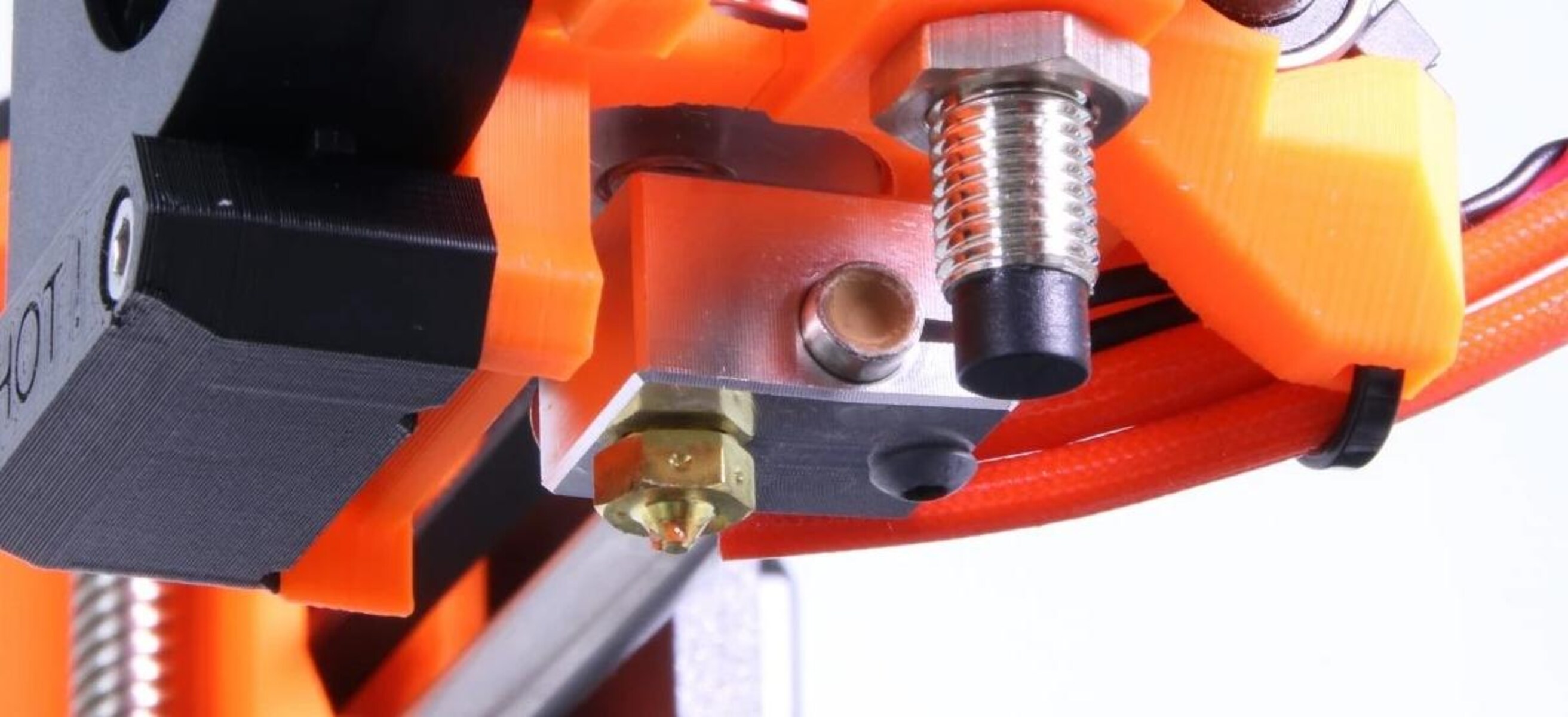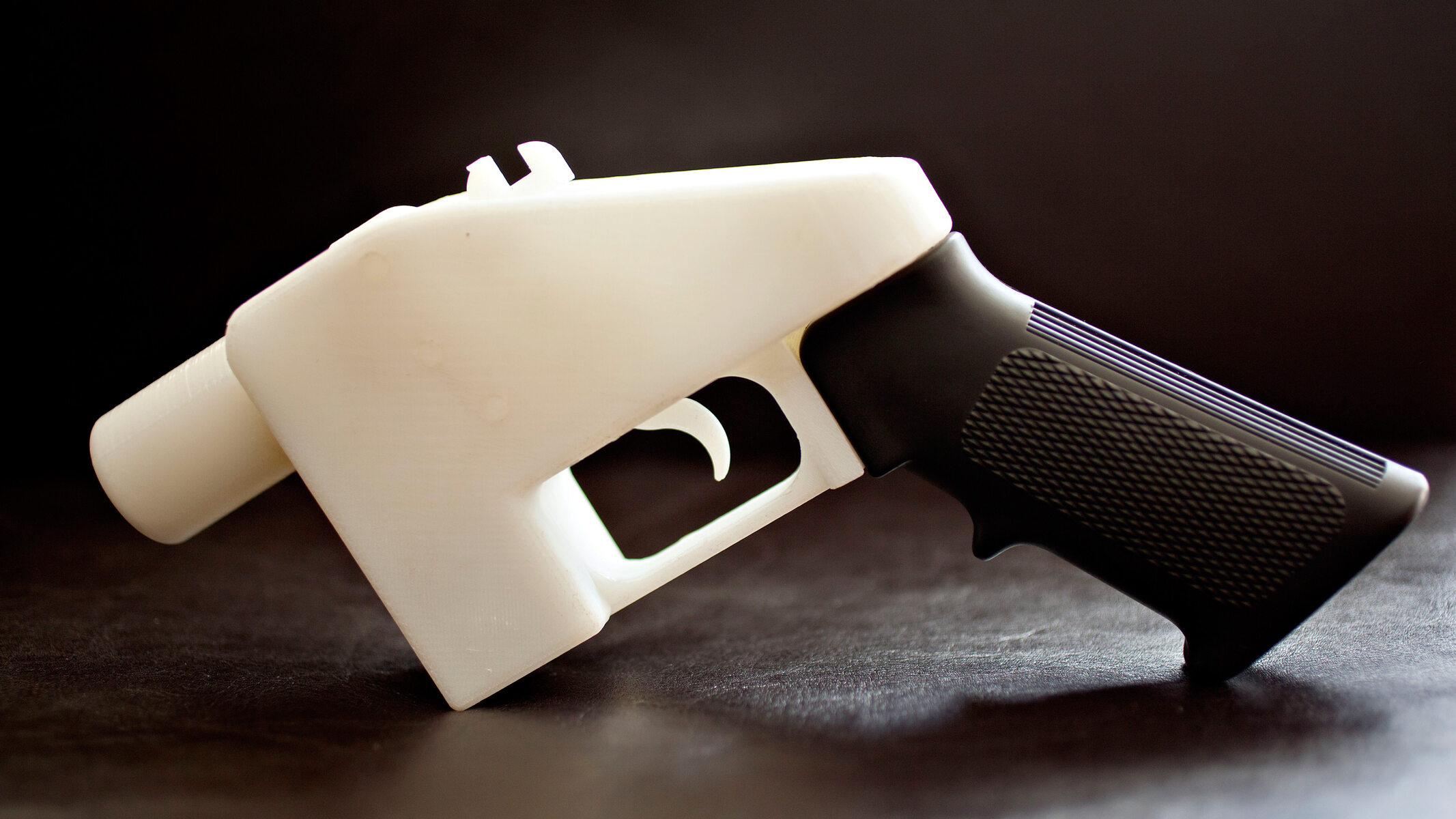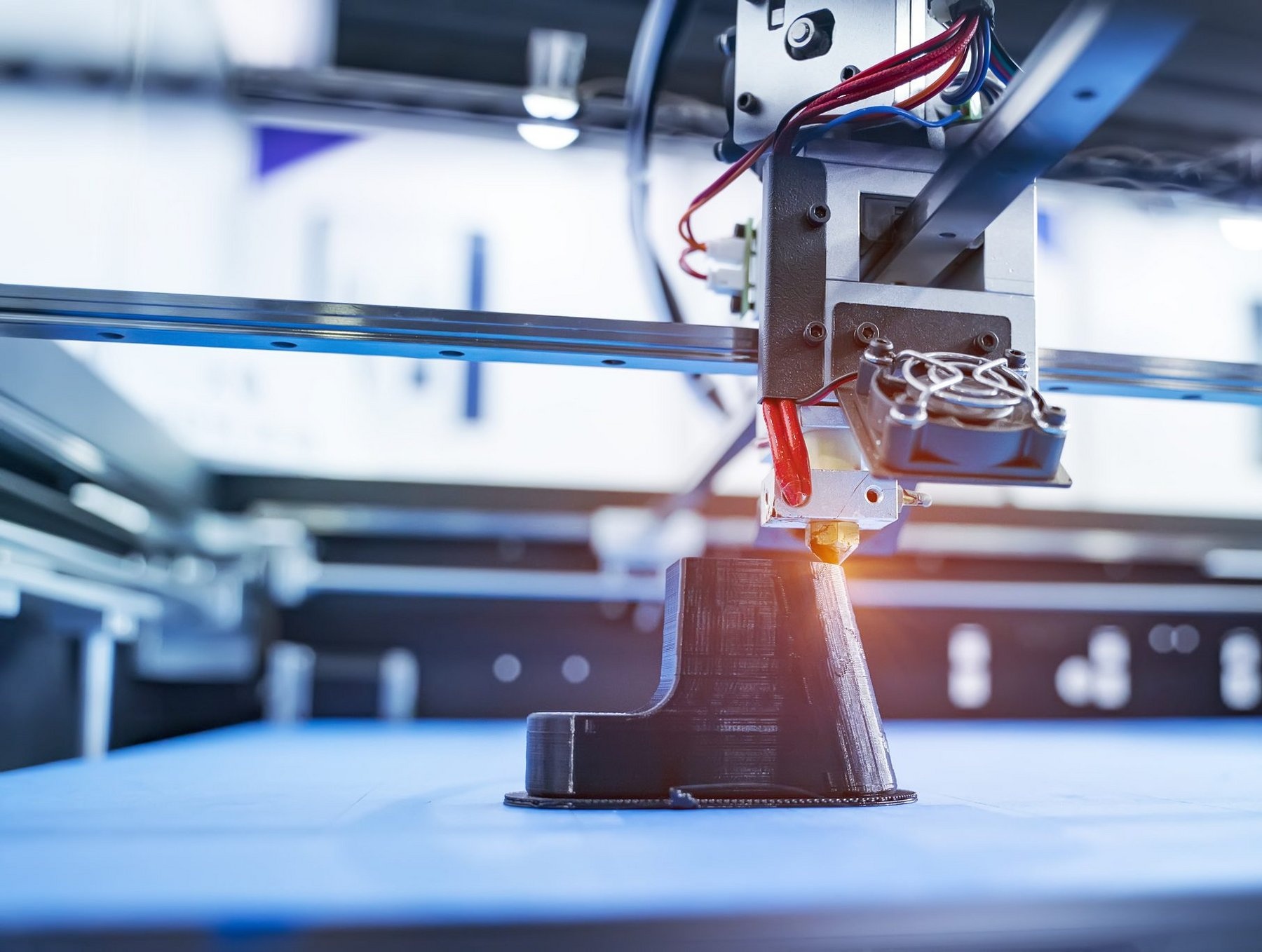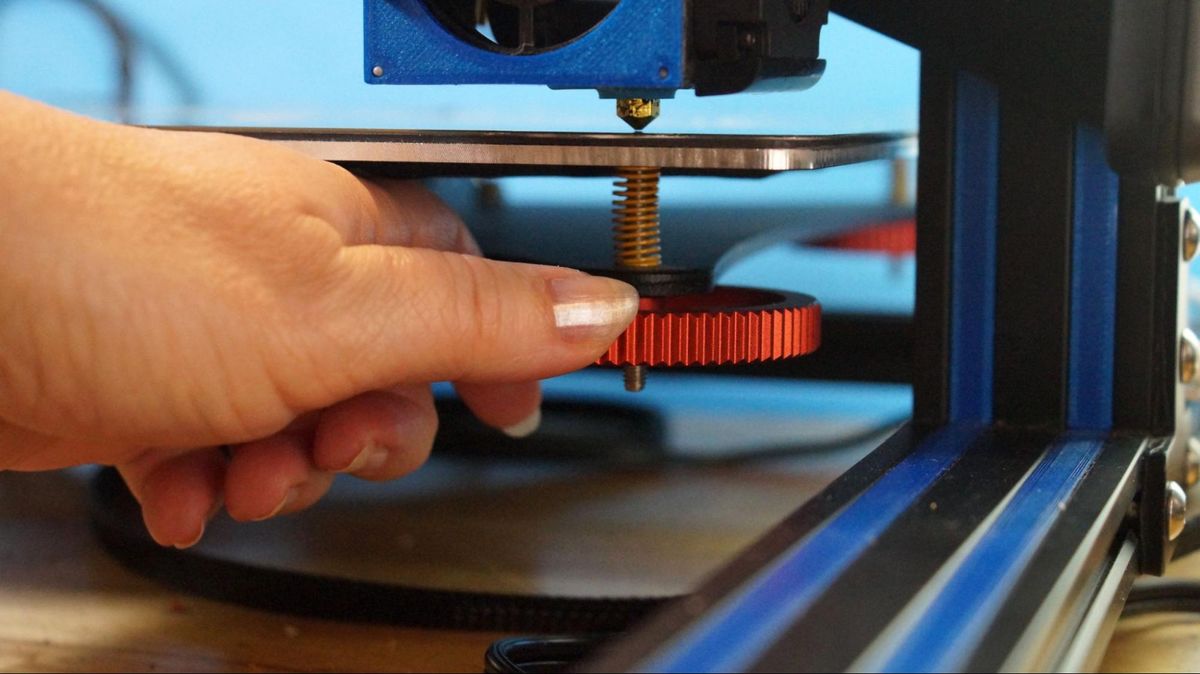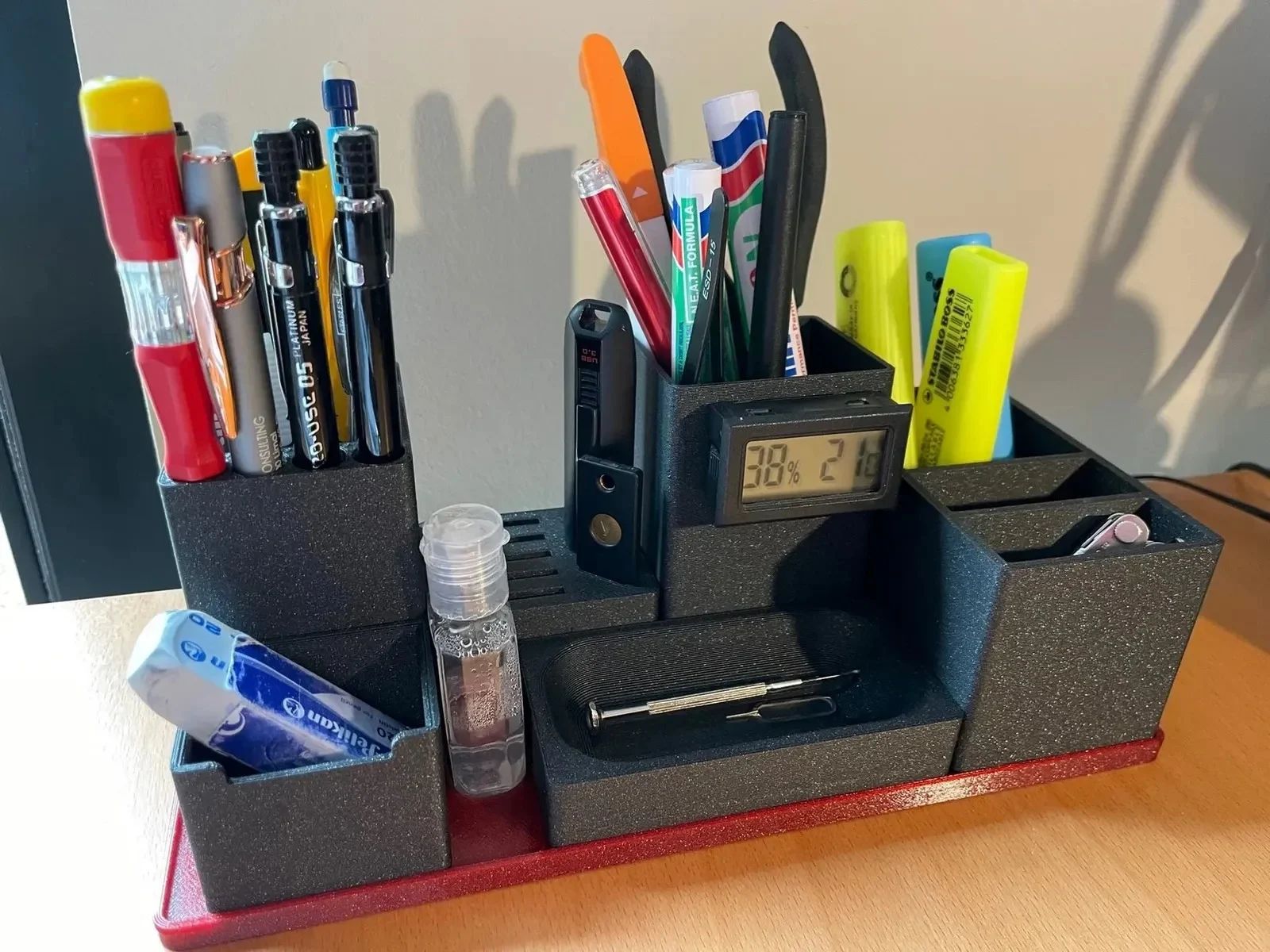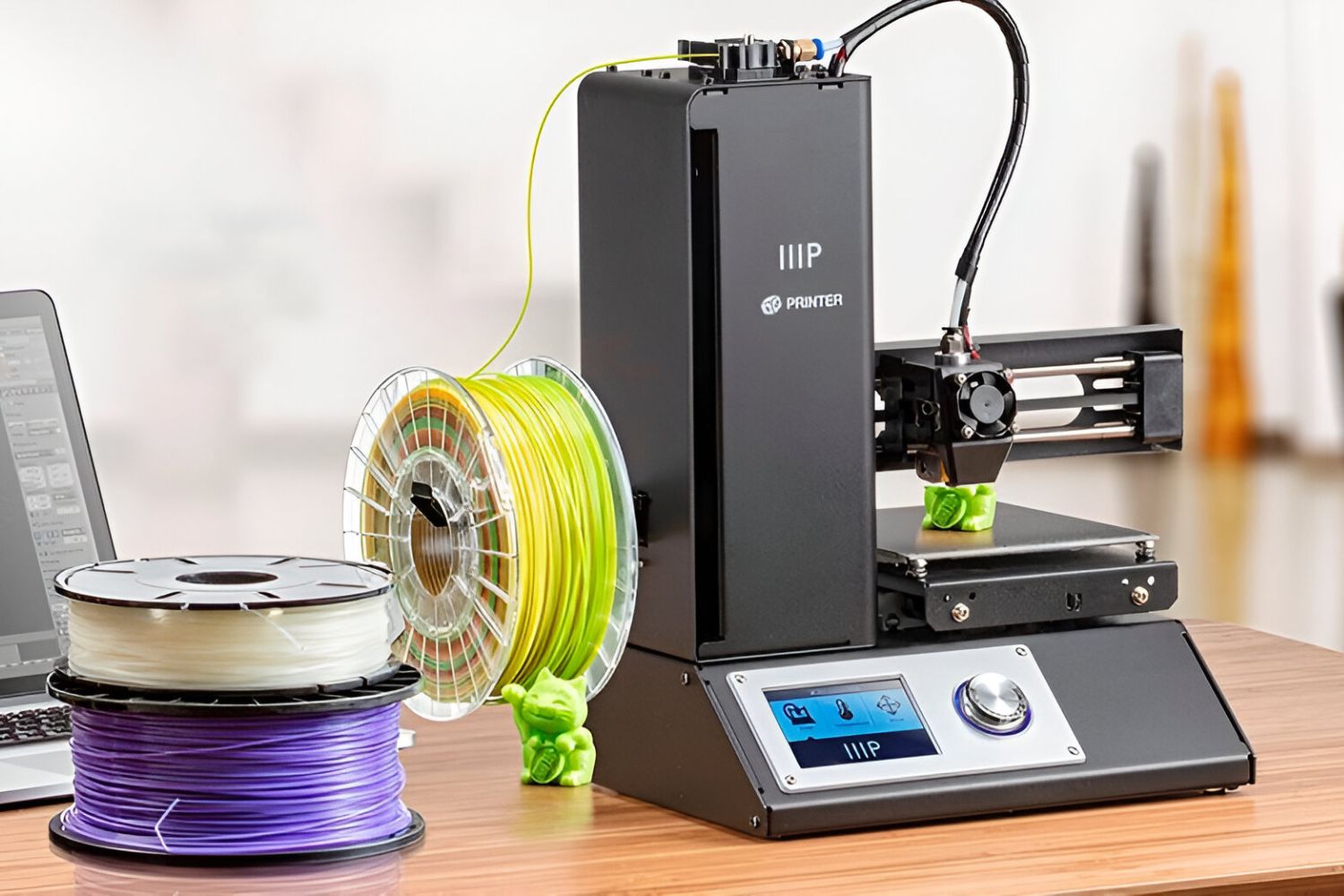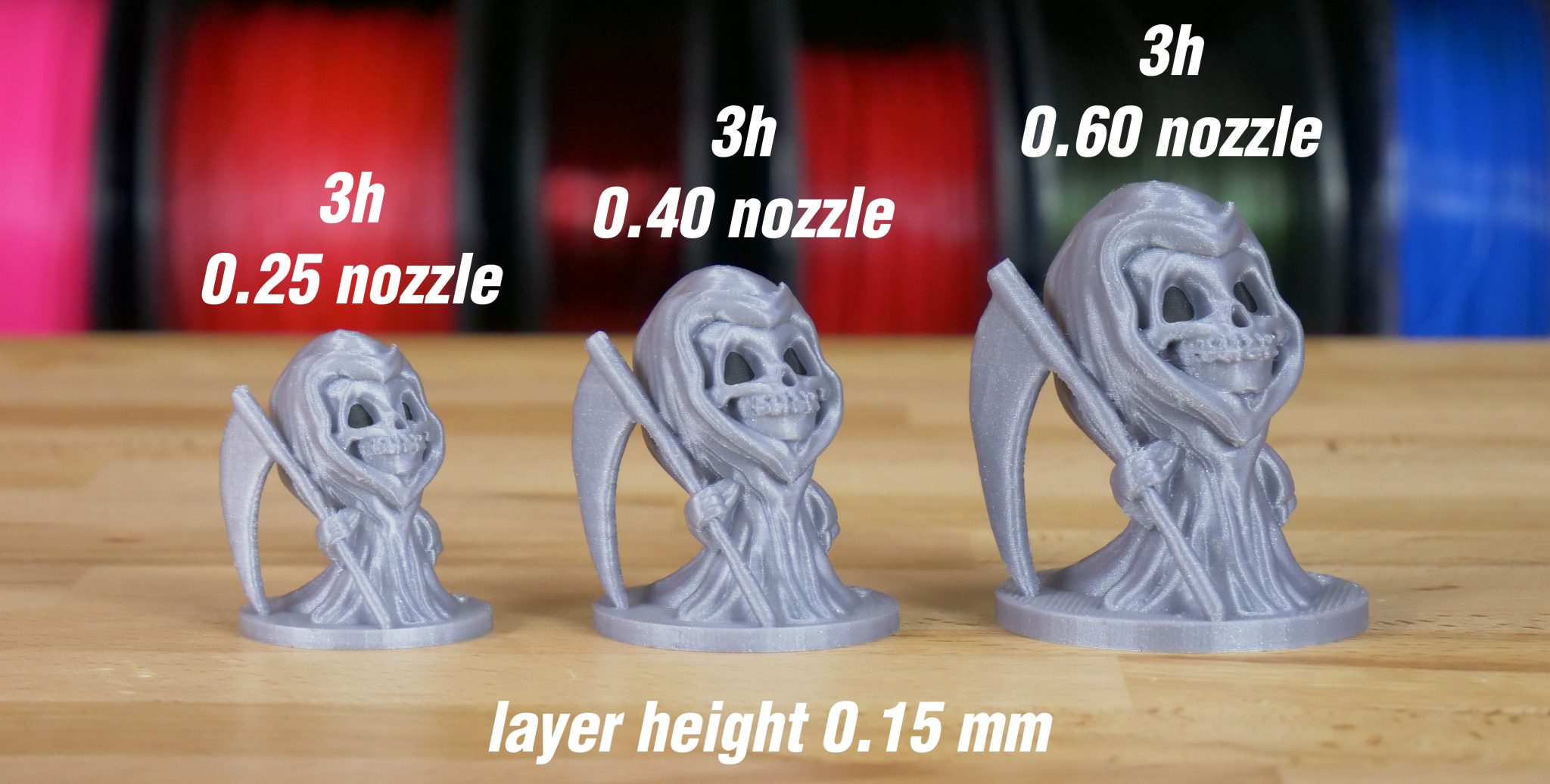The Beginnings of 3D Printing
3D printing, also known as additive manufacturing, has rapidly emerged as a groundbreaking technology that has transformed various industries. It all began in the early 1980s when Charles W. Hull invented and patented the process known as stereolithography, marking the birth of 3D printing as we know it today.
At its core, 3D printing is the process of creating three-dimensional objects by adding successive layers of material on top of each other. This is in stark contrast to traditional manufacturing methods that involve subtracting or shaping materials through cutting, carving, or molding.
Hull’s invention paved the way for further advancements and the development of different types of 3D printing technologies, including selective laser sintering (SLS), fused deposition modeling (FDM), and digital light processing (DLP). These technologies utilize different materials and processes to bring virtual designs into physical reality.
In its early years, 3D printing was primarily used for prototyping purposes in industries such as aerospace and automotive. The ability to quickly create precise and intricate models revolutionized the design and development process, saving companies time and resources.
Since then, 3D printing has evolved and expanded its applications across a wide range of fields, including healthcare, education, and even consumer goods. The technology has become more accessible and affordable, allowing individuals and small businesses to harness its potential.
The impact of 3D printing on various industries cannot be overstated. It has not only disrupted traditional manufacturing but has also opened up new opportunities for innovation and creativity.
From the rapid prototyping of functional parts to the customization of products and the creation of complex medical implants, 3D printing has revolutionized the way we think about production and design.
And as the technology continues to advance, we can expect even more exciting developments in the future. 3D printing has the potential to reshape entire industries, empowering individuals and transforming the way we create, manufacture, and consume goods.
How Does 3D Printing Work?
At its core, 3D printing is a process that transforms a digital design into a physical object through the sequential layering of materials. This innovative technology follows a few key steps to bring concepts to life.
The first step in the 3D printing process is creating a digital model of the desired object using Computer-Aided Design (CAD) software or 3D scanning techniques. This digital file serves as the blueprint for the 3D printer.
Once the design is ready, the next step involves preparing the 3D printer. This includes selecting the appropriate printing materials, such as plastic filaments, powders, or resins, and loading them into the printer’s cartridges or reservoirs. The printer’s build platform is then prepared with the necessary adhesion agents or build plates.
With the preparations in place, the 3D printing process begins. The printer interprets the digital model and uses that information to build the object layer-by-layer. There are different techniques used to achieve this, but most commonly, the printer employs one of the following methods:
- Fused Deposition Modeling (FDM): This method involves heating and extruding thermoplastic filaments through a nozzle. The nozzle moves in a precise pattern guided by the digital model, depositing the material layer-by-layer to form the desired shape.
- Stereolithography (SLA): SLA printers use a liquid resin that is hardened using a laser or light projector. The printer exposes each layer of the liquid resin to the appropriate amount of light, solidifying it and building the object from the bottom up.
- Selective Laser Sintering (SLS): SLS printers use a laser to selectively fuse or sinter powdered materials, such as plastics or metals. The laser scans the powder bed, melting the particles together to create each layer. This process is repeated until the entire object is formed.
As the printer continues layering the material according to the digital design, the object gradually takes shape. The process can take anywhere from a few minutes to several hours, depending on the complexity and size of the object being printed.
Once the printing is complete, the object may require post-processing, such as removing support structures, sanding, or painting, to achieve the desired finish. This step ensures that the final product is functional, aesthetically pleasing, and ready for use.
Overall, the combination of advanced software, precise hardware, and a wide array of materials allows 3D printers to bring digital designs to life, opening up endless possibilities for manufacturing and creativity.
Transforming Industries with 3D Printing
3D printing has had a profound impact on various industries, revolutionizing traditional manufacturing processes and unlocking new opportunities for innovation. Let’s explore how this technology is transforming different sectors.
Manufacturing: One of the most significant areas where 3D printing has made a notable impact is in manufacturing. With 3D printing, the need for traditional molds, tooling, and assembly lines is greatly reduced. This enables companies to streamline production, reduce costs, and accelerate time-to-market for new products. Additionally, 3D printing allows for the creation of complex geometries and customized designs that were previously challenging or impossible to achieve with traditional methods.
Healthcare: The healthcare industry has witnessed remarkable advancements through 3D printing. Medical professionals now have the ability to create patient-specific implants, prosthetics, and anatomical models that aid in surgical planning, research, and education. 3D printing has also shown tremendous potential in the development of bioprinting, where living tissues and organs can be printed using bio-ink containing cells.
Automotive and Aerospace: Both the automotive and aerospace industries have embraced 3D printing to enhance manufacturing processes and optimize designs. 3D printing enables the production of lightweight and complex parts, reducing the overall weight of vehicles and aircraft. This results in improved fuel efficiency, performance, and cost savings. Additionally, 3D printing enables rapid prototyping and customization, allowing for more efficient design iterations and faster product development.
Fashion and Design: 3D printing has opened up new avenues for creativity and self-expression in the world of fashion and design. Fashion designers can now create unique, avant-garde garments and accessories, pushing the boundaries of traditional textile-based fashion. Jewelry designers can experiment with intricate and personalized pieces that were previously unimaginable. The ability to rapidly prototype and iterate designs has also empowered designers to bring their ideas to life more efficiently.
Architecture and Construction: 3D printing has the potential to revolutionize the construction industry by enabling the fabrication of complex architectural structures. With large-scale construction printers, it becomes possible to construct buildings with greater precision, speed, and cost-efficiency. 3D printing can also utilize sustainable materials, reducing waste and environmental impact. This technology opens up possibilities for innovative and sustainable housing solutions, especially in disaster-stricken areas or where traditional construction methods are limited.
These are just a few examples of how 3D printing is transforming industries. As the technology continues to advance and become more accessible, its impact will only continue to grow. Whether it is in manufacturing, healthcare, design, or construction, 3D printing is reshaping the way we create, innovate, and solve problems.
Revolutionizing Manufacturing Processes
3D printing has emerged as a game-changer in the world of manufacturing, offering numerous benefits that have revolutionized traditional production processes. Let’s explore how 3D printing is transforming manufacturing across industries.
Rapid Prototyping: One of the key advantages of 3D printing is its ability to significantly speed up the prototyping phase of product development. Traditional prototyping often involves lengthy and costly processes, such as creating molds or machining parts. With 3D printing, product designers can quickly convert digital designs into physical prototypes, allowing for faster iterations, testing, and refinement.
On-Demand Manufacturing: 3D printing enables on-demand manufacturing, where products can be printed as needed, eliminating the need for large-scale inventory and reducing the risk of stock obsolescence. This streamlined production process reduces warehousing costs and enables companies to respond quickly to market demands, reducing lead times and increasing customer satisfaction.
Complex Geometries: Traditional manufacturing methods often have limitations when it comes to creating complex geometries, intricate designs, or internal structures. 3D printing overcomes these limitations by building objects layer by layer, allowing for the creation of intricate and highly detailed parts with internal cavities or complex shapes. This capability opens up new design possibilities and allows for the production of components that were previously impossible to manufacture.
Customization and Personalization: One of the most significant advantages of 3D printing is its ability to enable mass customization. In traditional manufacturing, mass production typically involves making identical products in large quantities. With 3D printing, each product can be customized to meet the specific needs and preferences of the customer. This customization capability can be leveraged across industries, from personalized medical implants to custom-fit consumer products.
Reduced Waste and Carbon Footprint: Traditional manufacturing processes often result in significant waste, as materials need to be cut, carved, or molded to achieve the desired shape. 3D printing, on the other hand, is an additive process that only uses the exact amount of material necessary to create the object. This reduces material waste and contributes to a more sustainable manufacturing approach. Additionally, 3D printing allows for the use of recycled or eco-friendly materials, further reducing the carbon footprint of the manufacturing process.
As 3D printing continues to evolve and become more accessible, its potential to revolutionize manufacturing processes becomes increasingly evident. Its ability to shorten development cycles, enable customization, and reduce waste not only drives efficiency and cost savings but promotes innovation and creativity. From prototyping to on-demand production, 3D printing is transforming the way products are manufactured, offering unprecedented opportunities for industries to thrive in a rapidly changing market.
Advancements in Medicine and Healthcare
3D printing has proven to be a game-changer in the field of medicine and healthcare, enabling groundbreaking advancements and transforming patient care. Let’s explore some of the ways 3D printing is revolutionizing this industry.
Precise Surgical Planning: 3D printing technology allows medical professionals to create anatomically accurate models of patient-specific organs, bones, or complex anatomical structures. Surgeons can use these models for preoperative planning, allowing them to visualize and practice complex procedures before entering the operating room. This enhances surgical accuracy and reduces the risk of complications, leading to improved patient outcomes.
Customized Prosthetics and Implants: 3D printing has revolutionized the production of prosthetics and implants. Through 3D scanning and printing, custom-fitted prosthetic limbs, dental implants, and even hearing aids can be created to perfectly match a patient’s unique anatomy. This level of customization improves comfort, functionality, and overall quality of life for those receiving these devices.
Bioprinting and Tissue Engineering: 3D bioprinting is an emerging field that has the potential to revolutionize regenerative medicine and organ transplantation. Using bio-inks composed of living cells, researchers can print three-dimensional tissues and organs. This technology holds promise for growing replacement organs, such as hearts, kidneys, and livers, which could address the critical shortage of donor organs and reduce the risks associated with transplantations.
Medical Education and Training: 3D printing provides medical students and professionals with hands-on educational tools that were previously unavailable. Anatomical models created through 3D printing allow for a tactile understanding of complex structures and pathologies. Surgeons can practice intricate procedures on patient-specific 3D-printed models, enhancing their skills and confidence before performing actual surgeries.
Drug Delivery and Personalized Medicine: 3D printing has the potential to revolutionize drug delivery systems by enabling the production of personalized medication in specific dosages and forms. This technology allows for the creation of complex drug structures with controlled release properties. By tailoring medication to individual patients, 3D printing can improve drug efficacy and reduce adverse side effects.
The integration of 3D printing into the field of medicine and healthcare has already demonstrated significant advancements and groundbreaking possibilities. From surgical planning and customized implants to bioprinting and personalized medicine, this technology has the potential to transform patient care, improve treatment outcomes, and shape the future of healthcare.
Impact on Education and Learning
3D printing has had a profound impact on education and learning, transforming the way students engage with complex concepts and hands-on activities. Let’s explore the various ways 3D printing is revolutionizing education.
Enhanced Visualization and Conceptual Understanding: 3D printing allows students to bring abstract concepts to life by creating tangible physical models. Whether it’s a replica of a historical artifact or a molecular structure, 3D printing enables students to visualize and interact with complex ideas, enhancing their understanding and retention of information.
Hands-On Learning Experiences: With 3D printing, students can actively participate in the design and creation process. This hands-on approach fosters creativity, problem-solving skills, and critical thinking. It encourages students to be active learners who are engaged and motivated in their educational journey.
STEM Education and Innovation: 3D printing has become an essential tool for STEM (Science, Technology, Engineering, and Mathematics) education. It allows students to design and prototype their inventions, exploring concepts in engineering, robotics, and other technical fields. This hands-on experience fosters innovation, encourages experimentation, and prepares students for future careers in STEM-related industries.
Access to Specialized Learning Materials: 3D printing provides the opportunity for schools and educators to create specialized learning materials that meet individual student needs. For example, tactile models can be printed for visually impaired students, allowing them to explore and understand complex concepts in a unique and accessible way.
Collaborative Learning and Peer Engagement: 3D printing encourages collaboration and peer engagement in the classroom. Students can work together in teams, brainstorm ideas, and collaborate on design projects. This promotes teamwork, communication, and the development of interpersonal skills that are essential for success in the real world.
Career Readiness and Industry Relevance: By incorporating 3D printing into educational curricula, students gain exposure to emerging technologies and develop skills that are highly sought after in the job market. Employers are increasingly looking for candidates with hands-on experience in 3D printing and additive manufacturing, making students more career-ready and adaptable to the needs of evolving industries.
The integration of 3D printing in education not only enhances student engagement and learning outcomes but also prepares them for the technological advancements and demands of the future. It fosters innovation, creativity, and critical thinking skills that are essential for students to thrive in a rapidly changing world.
Sustainability and Environmental Benefits
3D printing has emerged as a sustainable and environmentally-friendly manufacturing process, offering numerous benefits in terms of resource conservation, waste reduction, and eco-friendly material usage. Let’s explore the sustainability and environmental advantages of 3D printing.
Reduced Material Waste: Traditional manufacturing methods often result in significant material waste due to the need for subtractive processes like cutting, molding, or drilling. In contrast, 3D printing is an additive manufacturing process that only uses the exact amount of material necessary to build the object. This significantly reduces material waste and promotes resource efficiency.
Efficient Use of Energy: 3D printing generally requires less energy compared to traditional manufacturing processes. Since 3D printers only need to heat and solidify the necessary amount of material, they consume less energy overall. This energy efficiency contributes to a reduced carbon footprint and lower environmental impact.
Use of Sustainable Materials: 3D printing allows for the utilization of sustainable and eco-friendly materials. For instance, bio-plastics made from renewable resources, such as cornstarch or algae-based materials, can be used as printing filaments. Recycling and upcycling of materials are also possible with 3D printing, reducing the demand for new raw materials and minimizing waste streams.
Localized Manufacturing and Supply Chains: 3D printing has the potential to reshape global supply chains by enabling localized manufacturing. Instead of shipping products across long distances, 3D printers can be located close to the point of demand, reducing transportation-related emissions and environmental impact. This approach also enables a more agile and responsive manufacturing ecosystem.
Design Optimization: 3D printing allows for the creation of complex geometries and intricate designs that were previously challenging to manufacture. By optimizing designs through topology optimization or lightweighting, 3D printed components can be made with minimal material usage while maintaining structural integrity. This reduces material consumption and ultimately contributes to resource and energy savings.
Reduced Carbon Emissions: The combination of reduced material waste, localized manufacturing, and energy efficiency leads to a significant reduction in carbon emissions. By embracing 3D printing, industries can progress towards a more sustainable and low-carbon future.
The sustainability and environmental benefits offered by 3D printing make it a viable alternative to traditional manufacturing processes. By reducing material waste, promoting energy efficiency, and enabling the use of sustainable materials, 3D printing contributes to a more eco-friendly and resource-efficient manufacturing ecosystem.
Empowering the DIY Culture
3D printing has revolutionized the do-it-yourself (DIY) culture by empowering individuals to create, innovate, and bring their ideas to life. This technology has opened up a world of possibilities for DIY enthusiasts, makers, and hobbyists. Let’s explore how 3D printing is fueling the DIY culture.
Accessible and Affordable: 3D printing has become increasingly accessible and affordable, making it easier for individuals to bring their DIY projects to fruition. Desktop 3D printers, filament materials, and design software are now within reach of hobbyists and enthusiasts, allowing them to set up their own mini-production studios at home.
Customization and Personalization: 3D printing enables customization and personalization in ways that traditional manufacturing methods cannot. DIY enthusiasts can design and print unique, one-of-a-kind objects that suit their specific needs and preferences. Whether it’s custom phone cases, home decor items, or jewelry designs, 3D printing allows for creative expression and individuality.
Prototyping and Iteration: DIY projects often involve iterative design and experimentation. 3D printing facilitates the rapid prototyping process, allowing makers to quickly iterate their designs and make improvements. This saves time and resources compared to traditional prototyping methods.
Replacement Parts and Repairs: 3D printing enables DIY enthusiasts to create custom replacement parts or repair broken objects. Instead of relying on hard-to-find or expensive replacement components, makers can simply design and print the required parts, extending the life of their devices and reducing waste.
Educational Value: 3D printing provides a valuable learning experience for DIY enthusiasts. It promotes hands-on learning, problem-solving, and critical thinking skills. Makers can learn about design principles, engineering concepts, and manufacturing processes through practical exploration and experimentation.
Sharing and Collaboration: The DIY community is known for its spirit of sharing and collaboration. Online platforms and communities allow makers to exchange ideas, share 3D designs, and collaborate on projects. This open and collaborative environment fuels innovation and supports the growth of the DIY culture.
Through its accessibility, customization capabilities, and educational value, 3D printing has become a powerful tool in the hands of DIY enthusiasts. It has democratized the manufacturing process, turning individuals into creators, and allowing them to unleash their creativity and innovation like never before.
Expanding Opportunities for Designers and Creatives
3D printing has opened up new and exciting opportunities for designers and creatives, revolutionizing the way they conceptualize, prototype, and manufacture their ideas. This technology has transformed the creative landscape and empowered individuals to bring their visions to life. Let’s explore how 3D printing is expanding opportunities for designers and creatives.
Design Freedom and Innovation: 3D printing offers unparalleled design freedom. Designers can create intricate and complex geometries that were previously impossible or difficult to achieve with traditional manufacturing methods. This capability enables unprecedented levels of innovation, pushing the boundaries of what is possible in product design and art.
Rapid Prototyping and Iteration: 3D printing allows designers to quickly iterate and test their ideas. Instead of relying on time-consuming and expensive prototyping processes, designers can design and 3D print multiple iterations in a fraction of the time, helping them refine their designs and improve product functionality before final production.
Customization and Personalization: With 3D printing, designers can create customized products and designs tailored to individual needs and preferences. This personalization capability is particularly valuable in industries such as jewelry, fashion, and home decor, where unique and personalized pieces are in high demand.
Sustainable Design Practices: 3D printing promotes sustainable design practices by reducing material waste. Designers can optimize their designs to minimize material usage, incorporate recycled or eco-friendly materials, and create products with minimal environmental impact. This focus on sustainability aligns with consumer demands for more environmentally-conscious and responsible design.
Small-Batch Production and Manufacturing: 3D printing enables designers to produce small batches of products without the need for large-scale manufacturing facilities. This flexibility allows designers and creatives to bring their designs to market with lower financial risks. It also supports the growth of independent designers and small businesses in the creative industry.
Artistic Expression and Sculptural Design: 3D printing has unleashed new possibilities in art and sculptural design. Artists can create intricate and visually stunning pieces using 3D modeling software and bring them to life through 3D printing. This technology enables artists to experiment with new forms, shapes, and textures, pushing the boundaries of artistic expression.
By providing design freedom, rapid prototyping capabilities, and the ability to personalize products, 3D printing has revolutionized the creative landscape. Whether in product design, fashion, art, or other creative fields, this technology offers endless opportunities for designers and creatives to innovate, push boundaries, and express their unique visions.
Challenges and Limitations of 3D Printing
While 3D printing has brought significant advancements and benefits, it also faces certain challenges and limitations. These factors can impact its widespread adoption and implementation. Let’s explore some of the challenges and limitations of 3D printing technology.
High Initial Costs: The cost of acquiring and maintaining 3D printing equipment, especially for industrial-grade printers, can be substantial. This can pose a significant barrier for small businesses, individuals, or educational institutions looking to adopt this technology.
Print Speed and Production Time: 3D printing is generally a slower process compared to traditional manufacturing methods. Producing complex or large-scale objects can take hours or even days, depending on the size and intricacy of the design. This slower production time can hinder high-volume manufacturing and rapid product delivery.
Limited Material Selection: The range of materials available for 3D printing, while expanding, is still more limited compared to the options available in traditional manufacturing. This can restrict the types of products that can be manufactured or impact the quality and durability of the final printed object.
Limited Print Resolutions and Accuracy: Achieving fine details and precise tolerances in 3D printing can be challenging, especially with lower-end or consumer-grade printers. The layering process of 3D printing can result in visible layer lines or a less smooth finish, which may not meet the aesthetic or functional requirements of certain applications.
Surface Finishing and Post-Processing: Most 3D printed objects require some level of post-processing to achieve the desired surface finish. This can include sanding, polishing, or painting. Depending on the complexity of the design, post-processing can be time-consuming and labor-intensive, adding additional costs and delaying the final product delivery.
Intellectual Property and Design Protection: The ease of sharing and replicating 3D designs raises concerns about intellectual property rights and design theft. Designers and businesses must navigate the challenges of protecting their unique designs from unauthorized replication or infringement.
Environmental Impact: While 3D printing can reduce material waste during the manufacturing process, there are environmental concerns associated with the disposal of used or failed prints, as well as the proper handling of 3D printing waste materials, such as used powders or resin residues.
Despite these challenges and limitations, ongoing advancements in technology, materials, and processes continue to address these issues and push the boundaries of what is achievable with 3D printing. As the technology evolves, it is expected that many of these challenges will be overcome, enabling wider adoption and unlocking even more possibilities for this transformative manufacturing technology.
Future Implications of 3D Printing
As 3D printing technology continues to advance, its future implications are vast and far-reaching. From transforming industries to impacting healthcare and education, let’s explore some potential future developments and implications of 3D printing.
Mass Customization: 3D printing has the potential to enable mass customization on a scale never seen before. As the technology improves and production costs decrease, we can envision a future where consumers can easily customize and personalize everyday products to their exact preferences.
Supply Chain Disruption: 3D printing has the potential to disrupt traditional supply chains. Instead of shipping products from centralized manufacturing facilities, 3D printers could be located closer to consumers, reducing transportation costs and carbon emissions. This decentralized approach could lead to greater efficiency and agility in meeting customer demand.
Bioprinting and Organ Transplantation: The field of bioprinting holds immense promise for the future. Scientists and researchers are actively working towards developing 3D-printed organs and tissues, which could revolutionize organ transplantation and address the global shortage of donor organs. This breakthrough could save countless lives and transform the healthcare industry.
Space Exploration and Colonization: 3D printing has already proven useful in space missions, where astronauts can 3D print tools or replacement parts on-demand. In the future, this technology could play a crucial role in space exploration and colonization, allowing for the construction and repair of structures and equipment in distant interplanetary environments.
Advancements in Materials: Research is continually pushing the boundaries of 3D printing materials, leading to new possibilities and applications. From printable electronics and conductive inks to biocompatible materials and advanced composites, future advancements in material science will widen the scope of objects that can be 3D printed.
Integration with Other Technologies: As 3D printing evolves, it will likely integrate with other emerging technologies, such as artificial intelligence (AI) and robotics. This synergy could lead to autonomous 3D printers, intelligent design optimization algorithms, and more sophisticated automated manufacturing processes.
Education Transformation: 3D printing has already made a significant impact on education, but its future implications are even more exciting. As the technology becomes more accessible, we can expect to see more schools adopting 3D printers as part of their regular curriculum, fostering innovation and preparing students for the job market of tomorrow.
The future implications of 3D printing are vast, encompassing a wide range of industries, technologies, and societal changes. As the technology continues to advance and become more pervasive, it has the potential to revolutionize the way we design, manufacture, and interact with objects, creating a more customized, sustainable, and innovative future.










